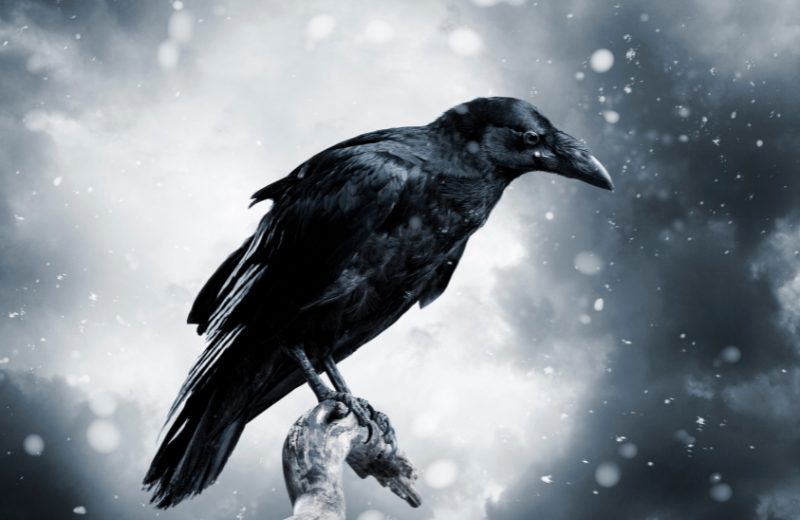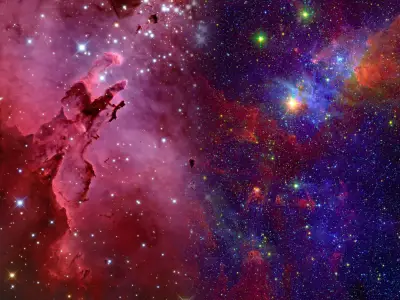The constellations have fascinated humanity for centuries, and each one comes with a rich history, mythology, and significance. One particularly intriguing constellation is Corvus. Let’s explore what makes Corvus so special and how you can spot it yourself.
Jump to:
Recommended for you!
Best SellersWhat is the Corvus Constellation?
Corvus is a small but interesting constellation in the Southern Hemisphere. Its name, Corvus, translates to "raven" or "crow" in Latin, which gives you a clue about its symbolism. The constellation consists of only a few bright stars, forming an easily recognisable quadrilateral shape that resembles the outline of a bird’s wing or a sail.
What Does Corvus Look Like?

When looking for Corvus in the sky, you’ll notice it forms a distinct four-star shape, often described as resembling a diamond or trapezoid. Though the constellation isn’t the brightest in the night sky, its unique configuration makes it relatively easy to identify. You’ll find Corvus near Virgo and Hydra, two other prominent constellations.
How Far is the Corvus Constellation from Earth?
The stars in Corvus vary significantly in distance from Earth. The constellation's brightest star, Gienah, also known as Alpha Corvi, is about 165 light-years away. Other stars, such as Kraz and Algorab, also vary in distance, creating an intriguing mix of celestial bodies. While Corvus may seem like a small, neatly packed constellation, it spans a considerable range across our galaxy.
The Corvus Constellation Myth

One of the most captivating aspects of Corvus is the Greek mythology behind it. The story involves the god Apollo, a white raven (or crow, depending on the version), and a tale of betrayal.
According to the myth, Apollo sent a raven to fetch water in a cup but instead, the bird became distracted by figs and delayed its task. To cover up its misdeed, the raven returned with a water snake, blaming the snake for the delay. Apollo, furious at the deception, cursed the bird and placed it in the sky, along with the cup (the constellation Crater) and the water snake (the constellation Hydra).
Corvus' Stars
Corvus may be a small constellation, but it features some remarkable stars that make it stand out:
- Gienah (Alpha Corvi): The brightest star in Corvus, Gienah is a blue-white star with a magnitude of 2.59. It holds a significant place as the constellation’s most prominent point, adding brilliance to the overall pattern. Located around 165 light-years from Earth, Gienah is essential for recognising Corvus’s shape.
- Kraz (Beta Corvi): Another important star in Corvus is Kraz, a golden-yellow star with a magnitude of 2.65. Though slightly fainter than Gienah, Kraz is crucial for outlining the constellation’s distinctive quadrilateral form. This star lies approximately 140 light-years away from Earth and complements the celestial beauty of Corvus.
- Algorab (Delta Corvi): Algorab is a notable star in Corvus, known for its striking appearance and a magnitude of 2.94. Positioned about 87 light-years from Earth, it forms part of the quadrilateral pattern and adds depth to the constellation's structure.
- Minkar (Epsilon Corvi): Completing the main shape of Corvus, Minkar is a red giant star with a magnitude of 3.02. It’s located roughly 303 light-years from Earth and serves as a key marker, helping observers easily identify the constellation in the sky.
Nebulae in the Corvus Constellation

While Corvus is small, it contains some fascinating deep-sky objects. One of the highlights is the Antennae Galaxies, a pair of interacting galaxies located between Virgo and Corvus. These galaxies are undergoing a cosmic collision, creating a spectacular sight for astronomers and stargazers. This region of space also contains several other intriguing nebulae and clusters, making it worth exploring if you have a telescope.
Finding Corvus in the Sky
Corvus is best seen in the Northern Hemisphere during the spring months, particularly in April and May. Although it’s not the most prominent constellation, its unique quadrilateral shape makes it relatively easy to locate once you know where to look.
Locating Corvus
To locate Corvus, first find Spica, the brightest star in the neighbouring constellation Virgo. Spica is one of the most easily recognisable stars in the sky and can be found rising in the southeast during spring evenings.
Once you’ve identified Spica, look to the south, just above Hydra, the longest constellation in the sky. Corvus lies directly above Hydra, forming a distinct quadrilateral pattern that resembles a bird’s wing or a sail.
Viewing Corvus with Binoculars or a Telescope
While the main stars of Corvus can be seen with the naked eye, using binoculars or a small telescope will enhance your viewing experience and reveal more of its features.
- With Binoculars: Binoculars will bring out fainter stars in Corvus and give you a clearer view of the four main stars that form the constellation’s shape. This makes it easier to appreciate the arrangement of Gienah, Kraz, Algorab, and Minkar.
- With a Telescope: A small telescope can help you explore Corvus’s more fascinating celestial objects. For instance, the Antennae Galaxies, a pair of colliding galaxies located near Corvus, become visible through a telescope, offering a spectacular view of this cosmic interaction.
The Best Viewing Times
Corvus is best viewed from mid-April to early June. During this period, it is high in the sky in the early evening, providing optimal viewing conditions. To get the best experience, find a dark location away from city lights, and give your eyes time to adjust to the darkness. This way, you’ll be able to see Corvus in all its glory and enjoy a stunning view of this celestial raven.
Recommended for you!
Best SellersFun Facts About Corvus
- Symbolism: Corvus has been a symbol of intelligence, trickery, and bad luck throughout history, depending on the culture. In some spiritual traditions, the constellation is thought to represent messages from the divine.
- Corvus in Roman History: The word "Corvus" also refers to a naval boarding device used by the Romans. There’s a common misconception that Archimedes invented the Corvus, but historical evidence doesn’t support this claim.
- Name Origin: The Latin word "Corvus" directly translates to "raven" or "crow," and the constellation has been associated with both birds in various myths. The spiritual meaning of Corvus often ties to themes of transformation and awareness.
Study Astronomy for £29
If the Crater constellation has sparked your curiosity, why not explore more about the stars and the cosmos with our Astronomy Diploma Course at Centre of Excellence? This course offers a detailed understanding of the universe, from constellations and star types to the fundamentals of space observation. Perfect for all budding astronomers, the course is available for a discounted price of £29.













